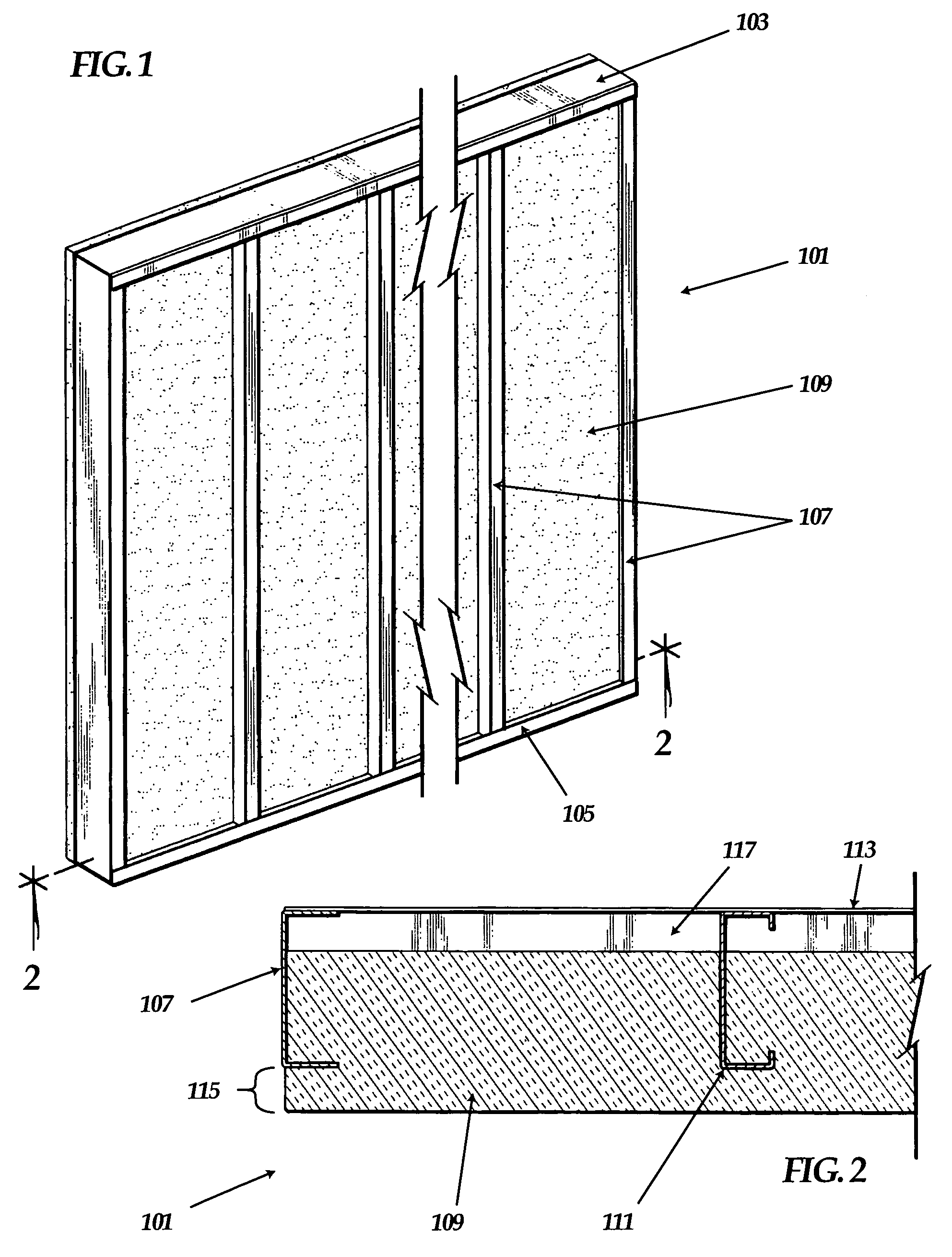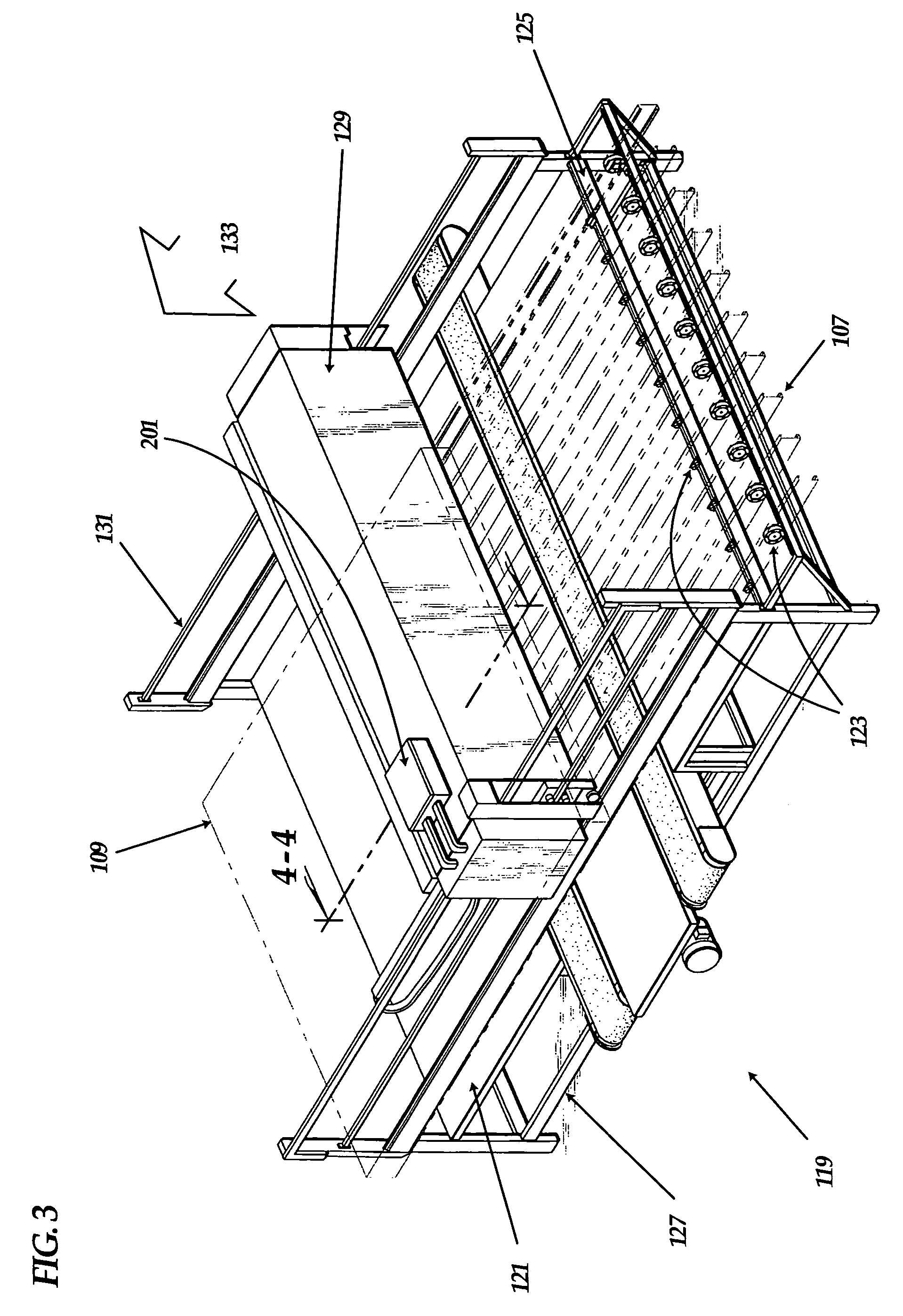Automated foam panel apparatus, blade, and associated method
a foam panel and automatic technology, applied in the field of automatic foam panel apparatus, blade and associated method, can solve the problems of low structural integrity, long time involved, and the need for skilled artisans to assemble materials, so as to avoid the pitfalls associated
- Summary
- Abstract
- Description
- Claims
- Application Information
AI Technical Summary
Benefits of technology
Problems solved by technology
Method used
Image
Examples
Embodiment Construction
[0027]The invention as disclosed herein provides a novel apparatus and method for constructing prefabricated foam panels for use in construction. As shown in FIGS. 1 and 2, foam panel 101 has four main components: top frame 103, bottom frame 105, one or more studs 107, and foam block 109. Studs 107 are inserted into kerfs 111 in foam block 109, such kerfs having a substantially similar cross-sectional shape as studs 107. Top frame 103 and bottom frame 105 are secured to studs 107 to form a strong, lightweight, insulated foam panel 101. Foam block 109 forms the exterior surface of foam panel 101. The interior of foam panel 101 is wallboard 113 or other like material such as drywall, fiberboard, or plywood, which is attached to studs 107 on the building site according to the specific architectural design of the building. In order to meet building codes of most locations, studs 107 must be recessed from the exterior of foam block 109 by a minimum predetermined depth 115. In most applic...
PUM
| Property | Measurement | Unit |
|---|---|---|
| depth | aaaaa | aaaaa |
| widths | aaaaa | aaaaa |
| temperature coefficient | aaaaa | aaaaa |
Abstract
Description
Claims
Application Information
 Login to View More
Login to View More - R&D
- Intellectual Property
- Life Sciences
- Materials
- Tech Scout
- Unparalleled Data Quality
- Higher Quality Content
- 60% Fewer Hallucinations
Browse by: Latest US Patents, China's latest patents, Technical Efficacy Thesaurus, Application Domain, Technology Topic, Popular Technical Reports.
© 2025 PatSnap. All rights reserved.Legal|Privacy policy|Modern Slavery Act Transparency Statement|Sitemap|About US| Contact US: help@patsnap.com



